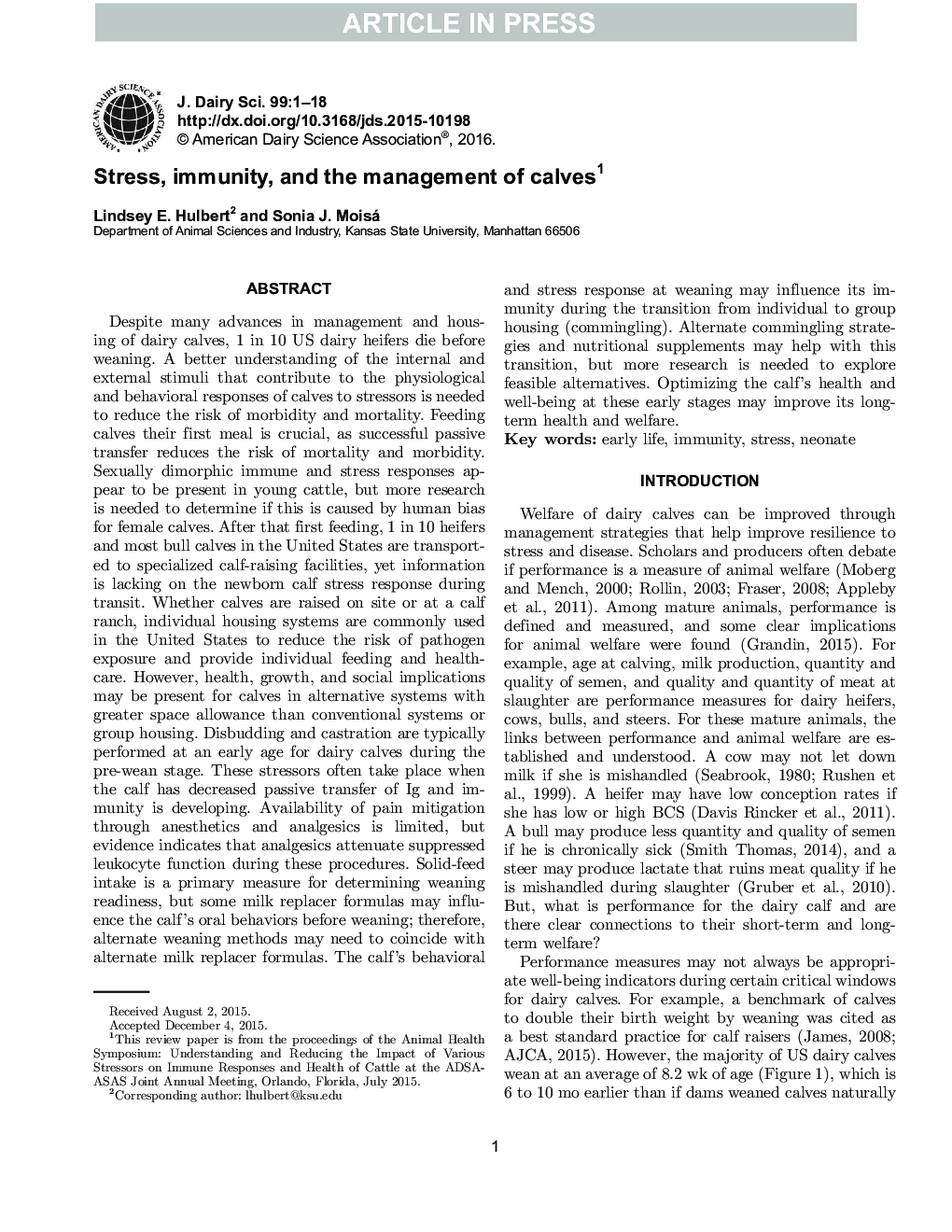| کد مقاله | کد نشریه | سال انتشار | مقاله انگلیسی | نسخه تمام متن |
|---|---|---|---|---|
| 10973158 | 1108010 | 2016 | 18 صفحه PDF | دانلود رایگان |
عنوان انگلیسی مقاله ISI
Stress, immunity, and the management of calves1
ترجمه فارسی عنوان
استرس، ایمنی و مدیریت گوساله ها 1
دانلود مقاله + سفارش ترجمه
دانلود مقاله ISI انگلیسی
رایگان برای ایرانیان
کلمات کلیدی
زندگی اولیه، ایمنی فشار، نوزاد
موضوعات مرتبط
علوم زیستی و بیوفناوری
علوم کشاورزی و بیولوژیک
علوم دامی و جانورشناسی
چکیده انگلیسی
Despite many advances in management and housing of dairy calves, 1 in 10 US dairy heifers die before weaning. A better understanding of the internal and external stimuli that contribute to the physiological and behavioral responses of calves to stressors is needed to reduce the risk of morbidity and mortality. Feeding calves their first meal is crucial, as successful passive transfer reduces the risk of mortality and morbidity. Sexually dimorphic immune and stress responses appear to be present in young cattle, but more research is needed to determine if this is caused by human bias for female calves. After that first feeding, 1 in 10 heifers and most bull calves in the United States are transported to specialized calf-raising facilities, yet information is lacking on the newborn calf stress response during transit. Whether calves are raised on site or at a calf ranch, individual housing systems are commonly used in the United States to reduce the risk of pathogen exposure and provide individual feeding and healthcare. However, health, growth, and social implications may be present for calves in alternative systems with greater space allowance than conventional systems or group housing. Disbudding and castration are typically performed at an early age for dairy calves during the pre-wean stage. These stressors often take place when the calf has decreased passive transfer of Ig and immunity is developing. Availability of pain mitigation through anesthetics and analgesics is limited, but evidence indicates that analgesics attenuate suppressed leukocyte function during these procedures. Solid-feed intake is a primary measure for determining weaning readiness, but some milk replacer formulas may influence the calf's oral behaviors before weaning; therefore, alternate weaning methods may need to coincide with alternate milk replacer formulas. The calf's behavioral and stress response at weaning may influence its immunity during the transition from individual to group housing (commingling). Alternate commingling strategies and nutritional supplements may help with this transition, but more research is needed to explore feasible alternatives. Optimizing the calf's health and well-being at these early stages may improve its long-term health and welfare.
ناشر
Database: Elsevier - ScienceDirect (ساینس دایرکت)
Journal: Journal of Dairy Science - Volume 99, Issue 4, April 2016, Pages 3199-3216
Journal: Journal of Dairy Science - Volume 99, Issue 4, April 2016, Pages 3199-3216
نویسندگان
Lindsey E. Hulbert, Sonia J. Moisá,
